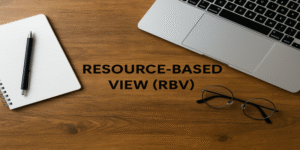Communicate Like a CEO: Mastering Executive Communication Skills
In today’s dynamic professional environment, effective communication skills is not merely a soft skill—it is a strategic necessity for leadership success. The article presents six practical exercises designed to help professionals enhance their communication, including formal feedback, tape reviews, the one-sentence rule, role-playing, mindful awareness, and preparation to shine. These techniques align closely with established theories of emotional intelligence (EI), mindful leadership, and executive communication as discussed in academic literature (Goleman, Boyatzis & McKee, 2013; Hall & Bell, 2019). This essay critically analyses each component of effective communication skills using insights from psychology, management, and communication studies, while demonstrating their application in real-world executive contexts.
1.0 Formal Feedback: Learning through Reflection and Response
Feedback lies at the heart of professional growth and self-awareness, two pillars of emotional intelligence (Goleman, 2019). CEOs and senior leaders consistently rely on structured feedback loops to refine their leadership voice. As Hall and Bell (2019) argue, feedback mechanisms that address both verbal and non-verbal cues foster authentic leadership. This exercise encourages seeking specific, actionable feedback from mentors and peers to reduce filler language and strengthen message clarity.
In a study on leadership development, Boyatzis (2017) highlighted that constructive feedback activates self-directed learning and emotional self-regulation, promoting a deeper awareness of how one’s communication affects others. For example, Satya Nadella, CEO of Microsoft, transformed the company’s culture by embedding “growth mindset” feedback sessions, allowing open dialogue that improved both innovation and collaboration (Harvard Business Review, 2017). Thus, formal feedback not only sharpens communication but reinforces a culture of empathy and improvement.
2.0 Tape Reviews: Learning from Exemplary Models
Tape reviews draw from social learning theory, suggesting that observation and imitation play a vital role in developing leadership behaviour (Bandura, 1986). By analysing the speech patterns and emotional cadence of accomplished communicators, individuals can internalise successful communication strategies. Research by Goleman et al. (2013) found that mindful observation of other leaders enhances one’s ability to interpret emotional subtleties—an essential trait of emotionally intelligent communication.
A real-world example is Barack Obama’s communication training approach, which included reviewing recorded speeches to identify tone, pacing, and body language improvements (George et al., 2017). This reflective practice mirrors tape reviews, reinforcing that effective leaders are also continuous learners. Recording oneself, adds a meta-cognitive layer to communication learning—making leaders both subject and observer in their developmental process.
3.0 The One-Sentence Rule: Clarity in Concision
The one-sentence rule teaches leaders to articulate their central message with precision—a skill highly valued in corporate communication. As Mersino (2013) notes, clarity and brevity are hallmarks of emotionally intelligent leaders who can distil complexity into compelling simplicity. This principle aligns with executive summarisation, a skill necessary for board-level communication where decisions hinge on concise, high-impact statements.
Goleman and Boyatzis (2015) emphasised that clarity of message improves cognitive resonance and audience engagement. In practice, when Steve Jobs launched Apple’s “Think Different” campaign, the simplicity of his message encapsulated the company’s philosophy in one memorable line. The exercise encourages communicators to strip away jargon and focus on essence over elaboration, making their communication both memorable and quotable.
4.0 Role-Playing: Building Empathy through Perspective-Taking
Role-playing serves as a powerful tool for developing empathy and adaptability—core competencies of emotional intelligence (Berman & West, 2008). According to Ryback (2012), simulated scenarios allow individuals to experience diverse communication dynamics, improving their ability to respond appropriately under pressure. It also mirrors real-world leadership challenges where stakeholders’ perspectives must be understood before solutions can be proposed.
For instance, Google’s “Manager Feedback Labs” incorporate role-play exercises to prepare leaders for difficult conversations, fostering empathy and improved team dynamics. This aligns with research by Greenockle (2010), who found that empathetic communication directly enhances employee trust and organisational performance. Hence, role-playing functions as both a training and diagnostic tool, enhancing leaders’ ability to read emotional cues and adapt their tone and message accordingly.
5.0 Mindful Awareness: Cultivating Presence and Emotional Balance
Mindful communication is an emergent area of leadership science. Studies demonstrate that mindfulness—the practice of maintaining awareness of one’s thoughts and emotions—enhances both cognitive and emotional performance (Arendt, Verdorfer & Kugler, 2019). The emphasis is on breathing, calmness, and trigger recognition reflects this evidence-based approach.
Boyatzis and Goleman (2013) describe mindful awareness as a bridge between self-regulation and social awareness, two essential EI dimensions. For CEOs, this manifests as the ability to remain composed and empathetic in high-stakes settings. For example, Mary Barra, CEO of General Motors, credits mindfulness for her calm and transparent communication during crises, which restored stakeholder confidence. Furthermore, Sauer and Kohls (2011) argue that mindfulness training correlates with greater leadership success, especially in emotionally volatile industries. Thus, this exercise fosters the psychological resilience that underpins executive presence.
6.0 Prepare to Shine: Strategic Communication through Purpose and Preparation
Preparation distinguishes leaders from managers in the communication arena. As George and Ibarra (2017) contend, authentic leadership emerges when individuals communicate from a clear sense of purpose and values. “Prepare to Shine” integrates cognitive planning with emotional readiness—echoing Boyatzis and Finkelstein’s (2017) findings that effective communication is grounded in both knowledge and connection.
Tailoring messages to audience context and aligning them with organisational goals ensures that communication is strategic, not spontaneous. The Harvard Business Review’s “Everyday Emotional Intelligence” (2017) notes that when leaders prepare with empathy and self-awareness, they project authenticity that inspires trust. Consider Jacinda Ardern, former Prime Minister of New Zealand, whose emotionally intelligent briefings during the COVID-19 crisis demonstrated preparation balanced with compassion—a model of mindful leadership in action.
Integrating Emotional Intelligence and Communication Mastery
Each of the six exercises reflects a facet of Daniel Goleman’s Emotional Intelligence Framework, which encompasses self-awareness, self-regulation, motivation, empathy, and social skills (Goleman, 1995). When applied to communication, these components create a holistic model of leadership influence. Research by Mujtaba and Meyer (2022) indicates that leaders who integrate EI with reflective communication practices report higher levels of employee engagement and satisfaction.
In modern organisations, communication intelligence—the ability to adapt message, tone, and emotion—is as vital as strategic acumen. Combining structured feedback, mindful self-reflection, and role-based empathy enables leaders to communicate with precision and compassion. CEOs who embody these traits not only inspire action but also sustain trust during uncertainty, a key determinant of long-term success (Carroll, 2008).
To “Communicate Like a CEO” is to combine clarity with empathy, strategy with mindfulness, and feedback with authenticity. The six exercises outlined in this article provide a roadmap for cultivating executive communication excellence. Supported by research from Goleman (2019), Boyatzis (2017), and others, these practices translate the abstract concept of emotional intelligence into actionable leadership skills. In a world where digital noise often overshadows meaningful dialogue, leaders who master these disciplines stand out not by how much they speak—but by how deeply they connect.
References
Arendt, J.F.W., Pircher Verdorfer, A. & Kugler, K.G. (2019) Mindfulness and leadership: Communication as a behavioural correlate of leader mindfulness and its effect on follower satisfaction. Frontiers in Psychology, 10(667). [Online] Available at: https://www.frontiersin.org/articles/10.3389/fpsyg.2019.00667/full.
Bandura, A. (1986) Social Foundations of Thought and Action: A Social Cognitive Theory. Englewood Cliffs: Prentice-Hall.
Berman, E.M. & West, J.P. (2008) Managing emotional intelligence in US cities: A study of social skills among public managers. Public Administration Review, 68(4), 742–758.
Boyatzis, R.E. & Finkelstein, S. (2017) Harvard Business Review Everyday Emotional Intelligence. Harvard Business Press.
Carroll, M. (2008) The Mindful Leader: Awakening Your Natural Management Skills Through Mindfulness Meditation. Boston: Shambhala Publications.
George, B., Ibarra, H. & Jones, G. (2017) Authentic Leadership (HBR Emotional Intelligence Series). Harvard Business Press.
Goleman, D., Boyatzis, R.E. & McKee, A. (2013) Primal Leadership: Unleashing the Power of Emotional Intelligence. Harvard Business School Press.
Goleman, D. (2019) The Emotionally Intelligent Leader. London: Bloomsbury.
Greenockle, K.M. (2010) The new face in leadership: Emotional intelligence. Quest, 62(1), 35–45.
Hall, K. & Bell, R. (2019) Emotional intelligence and managerial communication. American Journal of Management, 19(1), 44–57.
Mersino, A. (2013) Emotional Intelligence for Project Managers. New York: AMACOM.
Mujtaba, B.G. & Meyer, C. (2022) Checklist for Professional Communication: A Path to Reflective Mindfulness and Self-Development Management. Human and Economic Management, 3(2), 99–108.
Ryback, D. (2012) Putting Emotional Intelligence to Work. London: Routledge.
Sauer, S. & Kohls, N. (2011) Mindfulness in leadership: Does being mindful enhance leaders’ business success? In Cognition and Communication. Berlin: Springer.









